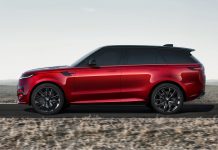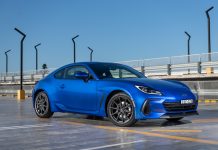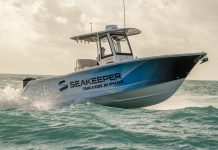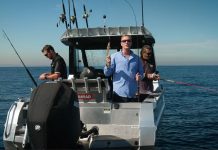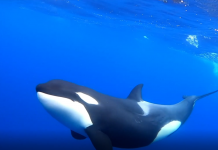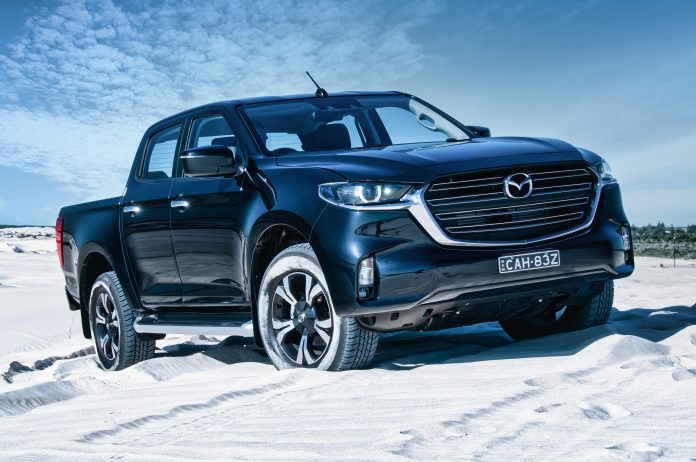When you consider the relationships between dual cab utes, it’s like watching an episode of Love Island. Isuzu had a thing with Holden; Mazda and Ford were an item; Nissan had a short fling with Mercedes. Now Holden’s left the scene, Nissan and Mercedes have split, Ford’s happy to be a swinging single again like Toyota and Mitsubishi. And Isuzu has started dating Mazda.
This latest hot couple sees the strategic partnership of Isuzu’s impressive, rugged D-MAX and Mazda’s handsome and refined BT50. Given Isuzu provide excellent road handling and off-road capability, Mazda has been clever enough not to tamper with the base vehicle. Rather than reinvent the wheel, Mazda has wrapped a solid foundation in their own unique design language, offering a different aesthetic that will appeal to those wanting less of a tough truck stance and more of a refined SUV appearance that stays true to Mazda’s own branding.
When Mazda offered me the opportunity to put their latest XTR BT50 4×4 dual cab, finished in a stunning Gunblue mica, through its paces, it was a great opportunity to catch up with Mick Brown, owner of the Lancelin Beach hotel, and get the good oil on the local conditions. Having torture tested the D-MAX on difficult bush trails, I thought why not throw the pendulum in the opposite direction for some challenging and technical driving on the majestic, sprawling white sands of the Lancelin dunes.
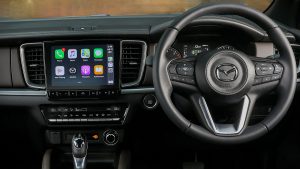
Eager to load up and get going, I appreciated the wide opening rear doors as I placed camera gear and bags into the roomy and accommodating rear seat area. Even the underfloor storage compartments came in handy for smaller items. Having topped up the 76L fuel tank the night before, I had a 900km range based on Mazda’s claimed 8L/100k fuel consumption. Sliding into the black cloth trimmed driver’s seat, the six-way manual adjustment made it easy to get comfortable.
Within easy reach, the nicely laid out row of tactile metal toggle switches allowed me to adjust cabin temperature and air flow. The high res 9” colour display adorning the center of the dash is responsive, and intuitive, making phone pairing via USB to Android Auto quick and easy. If you’ve got Apple car play, it’s wireless simplicity. Entering the address into the onboard sat nav, swiping through my Spotify album list to stream my favourite audio into a rather impressive eight speaker audio system, and I was ready to depart without any stressful setup fuss or botheration.
The BT50’s light and nimble electric-assisted steering provided effortless manoeuvrability as I made my way through narrow suburban streets, appreciating the 12.5m turning circle when performing a tight turn into my local Muzz Buzz for the obligatory morning coffee. It was a pity Mazda hadn’t deemed it a good idea to carry over those excellent cup holders found conveniently under the outward air vents in the D-MAX. You’ll need to caffeinate upsize as a regular size cup sits very low in the Mazda’s deep recess.
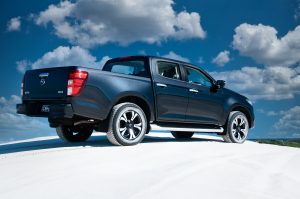
As other punters began hustling for position at intersections and traffic lights; it didn’t take long to appreciate the notable improvement in the BT50’s ride quality and quietness. The spring and shock absorber calibration gently absorbed small road irregularities, rather than jolting over them. The subtle suspension bushing, and chassis mounts further insulated the cabin from vibrations. The reworked door seals and foam-filled cavities of the upright pillars all reduced intrusion of outside noise into the cabin.
Enter the freeway on-ramp, lower the weight of the right boot and this all new 3L responded willingly, moving the dual cab’s bulk with convincing assertiveness to ease into the 100kph slip stream of fast-moving traffic. Despite it being a tad down on capacity, a cylinder short and lacking a little on reported performance figures in comparison to the previous 3.2L five cylinder, the new engine feels lighter on its feet. It was happy to work over a wider rev range giving it greater flexibility to deal with a broader range of driving demands. Coupled to a well-sorted six speed auto, the combination worked well together for smooth shifts in stop start traffic, nicely spread ratios for highway cruising or responsive changes when leveraging the BT50’s 140kW for overtaking on country roads.
Getting up to 110km/h as we left the city limits, the ride and handling through winding bends was impressive for an unladen ute with a carrying capacity of just over a tonne in the rear tub. Body roll is well controlled and there’s an assuring stability even when cornering. It’s easy to see this new BT50 would make a comfortable tourer with caravan or camper in tow, especially with a 350kg tow ball weight and a rated 3,500kg braked towing capacity across the entire dual cab range.
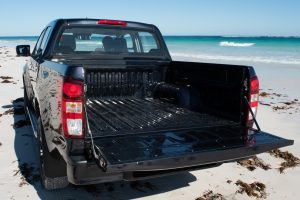
Arriving at the base of the Lancelin dunes, it was the ideal opportunity to stretch the legs and take a walk around the outside whilst airing down the Bridgestone Dualers HT 265/60R18 road tyres that account for some of the quietness of the on-road ride. While the 18” alloys look great, the hard plastic mud flaps would be an early casualty in rocky terrain, as flexibility isn’t their strong point.
The XTR variant lacks a practical liner in the decent sized rear tub, meaning an additional expense if you don’t want the inside of your new ute to look like a restless velociraptor has been sleeping in it. The tail gate has folding side straps as opposed to the more common cable supports and lacks tail gate assist—although the rear door didn’t feel as weighty as some.
Flipping to 4H but leaving the auto in drive to do its own thing, the six-speed proved itself to be more than capable of swapping cogs efficiently to match engine torque as demand changed. When the sand got deeper, the 3L’s torque output of 450Nm from 1600 to 2600rpm was smooth and progressive, which allowed for easy metering of power delivery to avoid excessive wheel spin and compensate for the variation in sand compaction.
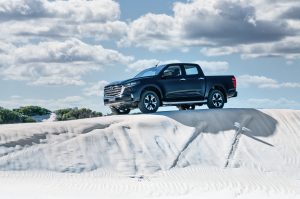
What did impress was the calibration and intervention of traction control. On several occasions when nearing the crest of a dune, I was fully expecting to reverse down. But the effective redistribution of engine torque between the rear wheels as the BT50 sought to gain purchase, slowly saw us climb forward at a walking pace with moderate engine rpm. The traction control neither bogged the BT50 down nor snatched and grabbed at spinning wheels to control slip. It was smooth and effective, validating a considerable amount of R&D has gone into improving this vehicle’s breadth of capability.
While it was comforting to know it was onboard, I didn’t once need to engage the rear diff lock. With the confidence that comes from Mick Brown’s 27 years of experience in driving the Lancelin dune systems, we could target more difficult sections that consumed every available mm of the BT50s 240mm ground clearance, and every degree of approach, ramp over and departure angles at 30.4, 23.8 and 24.2 respectively. Tipping the nose over some of the larger dunes we occasionally skimmed the edge with the BT50’s belly, but never enough to get hung up, even when lowering the nose off and outward at the bottom of the dune or as the tail settled down onto flat ground, there was nary a hint of scuffing or scalloping out of the soft sand.
First gear high range was the preferred setup, thanks to the willingness of this new diesel power plant, which enabled the BT50 to conquer almost every obstacle. I’ll stress “almost every” obstacle because you can’t cheat the laws of physics, despite the BT50’s determination to prove otherwise! We only needed to drop to low range to gain that transfer case torque advantage on some deep and soft beach front sections. The BT50 demonstrated a reassuring capability as it ploughed its way through soft sand and negotiated climbs to crest the dunes.
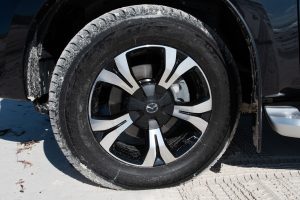
With such strong underpinnings, that also work well in the bush, even in standard guise off the showroom floor, this is a vehicle that won’t shy away from more adventurous challenges.
Driving back to Perth, I appreciated the crisp clear LED lights on the dark winding roads, the quiet cabin, and those comfortable seats, as it gave me time to reflect on the day’s outing and how well the BT50 had dealt with everything we’d thrown at it. Consuming around 9.5L/100k over a challenging day that required large amounts of right boot and engine effort was an impressive result.
The latest BT50 is clearly more capable off-road, and more refined on the black top. With a five-star safety rating and all the latest innovative driver safety tech as found in the D-MAX, the BT50 is strongly worthy of consideration as a comfortable long-distance tourer with caravan in tow. Given the large range of aftermarket accessories and upgrades on offer, it’s equally capable of becoming a serious off-road adventurer for intrepid explorers. You can customise it to your own individual needs or leave it factory standard and enjoy it as a family friendly, practical, easy to live with and do-it-all fun machine.
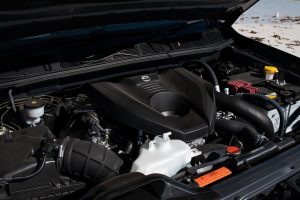
Fast Facts:
Price: $57,210
Engine: 3.0 litre 4 cylinder intercooled turbo diesel
Output: 140kW/450Nm
Transmission: Six-speed automatic
Fuel: 8.0L/100km
Safety rating ANCAP 5 Stars.


